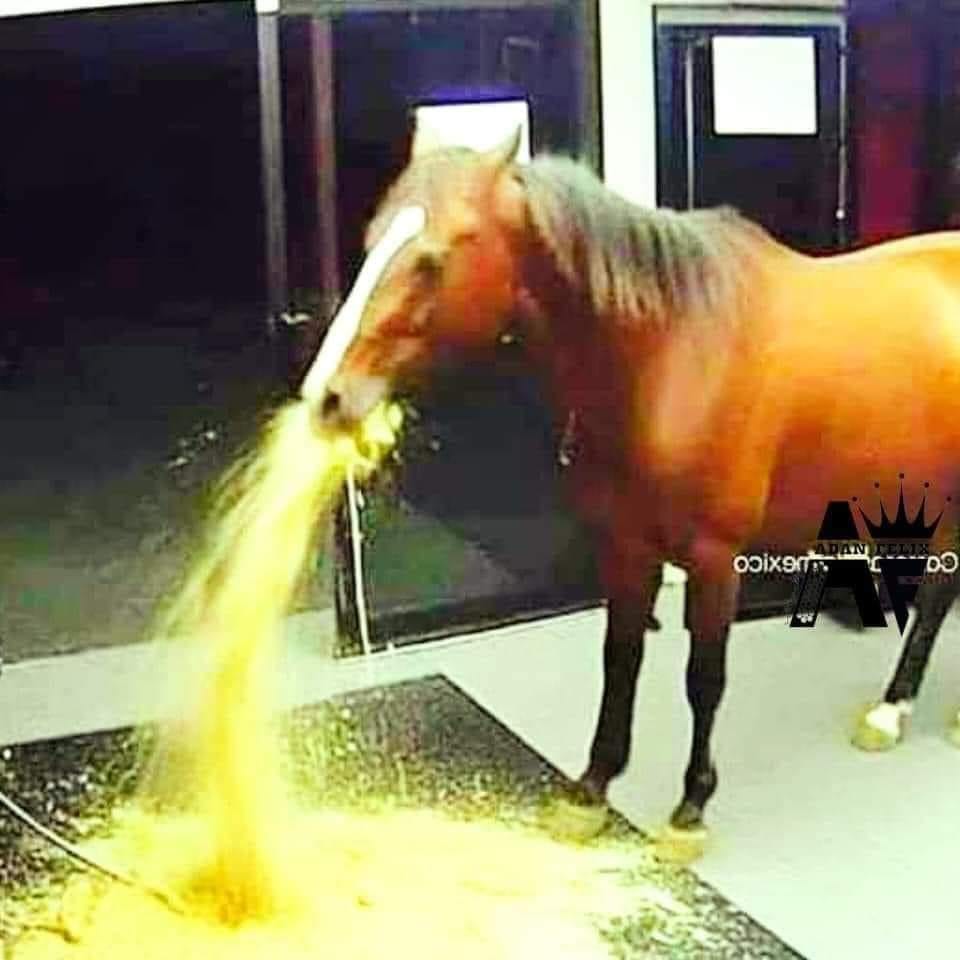I bought 175 g pack of salami which had 162 g of salami as well.
Let me introduce you to tolerance in measuring instruments and measuring errors.
Edit: Apparently I’m pro evil companies because I just pointed out that scales (and more importantly non-professional scales) have relatively high error tolerances (+ the measurament method error). Thus the measuring of this pasta and the possible interpretations of it have to take into account that.
When was the last time OP performed a guage R&R with a traceable calibrated mass standard? 😂
Somehow its always lower than claimed.
“Always” is a really strong word that you should not be using in this context since it’s just not true.
For example, there once was more than indicated on a package of lentils in 1958. So it’s clearly not always.
Got em!
Last year this claim went around for the Loblaws No Name brand in Canada so I went shopping with my kitchen scale, preparing to be outraged. Everything was a solid 10% over the advertised weight.
the tolerance exploit
That does not apply in today’s world where shrinkflation and consumer fraud run rampant.
It us solely the company’s responsibility to ensure each package is labeled with the correct weight, not the consumer to tolerate excuses like “measuing errors” whether they’re valid or not. Companies have too much power to just not know or be able to accurately weigh or label their product, ergo if there’s a problem, they chose to have it in there. And if you dispute that, I will simply block you and move on.
Stop defending evil corporations. Stop doing this.
All that speech does not change that the weighing scales he is using is cheap af and thus the measuring error is high enough. Even if the guys at the company had the best measuring system in the world without error and they packed 410g of pasta, the guy measuring at home with that scale would probably mesure a vaule not equal to the nominal one.
Maybe the scales have measuring errors because they defend evil corporations. “Please scales stop defending evil corporations!!”. Dude i hate scales they are so much pro system…
Srry your comment was too funny for me.
It’s clearly a conspiracy by Big Scale to sell more scales.
All that speech doesn’t change the fact that your standards don’t matter, ours do, and if our scales don’t match what that package says, you have to put more product in to make it do so or you are defrauding us. Period.
Now come back when you’re ready to meet our standards.
your standards don’t matter, ours do, and if our scales don’t match what that package says, you have to put more product in to make it do so or you are defrauding us. Period.
I’m not sure if I’m missing a joke here, but are you asking for some alternative-metrology here?!
Weight is a well-defined standard, and a properly calibrated scale > your kitchen scale.
Yeah this guy is pure comedy at this point tbh. Are you of the “our standards” team or “their standards” team (very evil, probably eat childs too)
You aren’t shit. They scales do meet standards that are tested periodically to ensure they aren’t false advertising. Do you really think these corporations don’t have audits?
Calm down, touch grass, try to get in touch with reality and stay off the tankie portions of the internet that feed these delusions.
You sound like an angry oldman not wanting to accept reality.
So you want companies to put excess product because you don’t know how to measure correctly (or don’t have good equipment). Well ask them. For the price of 410g, too? No? And maybe a paycheck supplement too.
I want a lot of things too.
The point is that it isn’t false advertising if you don’t know how to measure well. Is not a standar or whatever you think it is. It’s reality.
Outside the kindergarten where everything seems so simple and easy to understand. In real life you don’t have ideal things. You don’t have an ideal measuring place.
Sources of error when measuring:
- The material cut tolerance.
- Your house not being perfectly smooth leveled.
- (for electronic scales) RF noise.
- (for electronic scales) Tolerance on electronic components.
- The scale subjection points not perfectly pressed.
- (for electronic scales) discretization error.
- Components degradation.
- Humidity.
- Gas denisty near the scale.
- Gravity fluctuations in the region of measurement.
- Surface of the sample not resting completly in the scale plate. Etc.
And you are ranting about evil and “our” standards or whatever for a 2% error in the measurement? I would expect a 5% error given all that. That scale must be an exceptional good one.
It’s not standards it’s reality. Why do you think measuring labs are so expensive? Evil companies?
Try measuring your height more than once and see if results change. Hey if they change, you work for the evil companies, and you probably live in our “standards zone”.
Our/Yours standards was pure comedy. It’s getting better and better.
It us solely the company’s responsibility to ensure each package is labeled with the correct weight, not the consumer to tolerate excuses like “measuing errors” whether they’re valid or not
The measuring error is on OP’s end, not the manufacturer.
Sup, I’m your local friendly USDA contractor who very much uses scales everyday. Consumer grade kitchen scales are terrible and will lie to you. The fact that it does not go out to the tenths or hundredths is a big flag for accuracy.
We check test our scales twice a year to make sure they are accurate. I once tried check testing my kitchen scale I use for canning for giggles and it failed miserably. It would only register weight on 2 out of 4 quadrants until I got to 10g or so. I’m sure my ohaus is going to show a different and more accurate result if I where to try it.
Eight grams off? That seems rather significant. I mean we use to buy 20 grams of weed we’d know if it was almost half shy.
8g sure but this is only within 2% error. most scales would probably be within 3% so this isn’t surprising
You would presumably use a higher precision scale for that purpose. I know my kitchen has a large scale that’s only 1 g precision but can go up to 8 kg, and one that’s .01g precision but only goes up to 500g.
Unless you were using a certified scale and checking it with certified check weights every time you used it, you were just guessing and hoping your dealer wasn’t randomly or purposely off. And density of the material weighed matters also. Weed is far less dense than pasta so a discrepancy can be more noticeable since it takes a larger volume of weed to reach a particular weight than pasta does.
Understand that a digital kitchen scale is made with the cheapest load sensors a manufacturer is willing to pay for. Nor do they come with any kind of traceable certification as to accuracy class. In fact you get no guarantee that your shiny new kitchen scale is fit for even that purpose - just that it turns on, lights up, and displays something when you place a load upon it.
Accuracy is a cruel and VERY expensive mistress to chase. And most people don’t understand it anyway.
that’s why you don’t use a scale that’s only accurate to the full gram (and barely that) when dealing with something where the cost is such that a missing half gram actually makes a difference.
Well you were high so we can’t be sure about those numbers
I wasnt at the time but twenty minutes later, sure
Dealers digital scales have 2 decimal places.
please actually do it. Not for any real Reason but just because it’s funny to use professional equipment to weigh Pasta
Now, I agree with you that if you believe a home kitchen scale is telling the truth, you are a fool. But as an old toolmaker who dabbled in accuracy for a living, displayed digits does not equal accuracy nor even repeatability. And there can be a fair amount of interpretation involved in analog beam scales.
I think it’s just another PPS, (piss poor scale), scale that is neither accurate nor repeatable. And the packaging material weights are rarely included in listed weights. Since packaging can change at any time due to costs.
Well, it can’t be packaged to scientific standards, it has to be packaged to ours.
Scale accuracy was never a problem or scrutinized until ow, and successfully helped people lose weight, so it’s not the accuracy of the scales that is an issue.
This is blatant consumer fraud and nothing in your field can change that fact, clearly.
This just doesn’t make sense.
You wouldn’t say the same when talking about other products. If you buy ibuprofen for example you wouldn’t say “it can’t be packaged to scientific standards, it has to be packaged to ours” if you try to weigh a single pill with your kitchen scale.
Stuff HAS to be packaged to scientific standards. Period.
If your tools at home aren’t accurate enough or simply aren’t properly calibrated for a specific job, it can’t be the fault of the producer.
If you use a 2€ kitchen scale that is 10 years old you can’t blame the producer if your measurement is off by 10%.
The producer cannot make sure YOUR equipment is proper for the task, and they can’t make sure EVERYONES scales see the exact same. So of course they have to weigh with their own scales and surprise surprise they use extremely precise scales that are properly calibrated and tested regularly.
If you read his comments to my comments he states that following “their” (?) standards, the producers have to put much more product in order to “”““adjust””“” for the tolerance error of random consumers. Clueless.
I think you’re a bit off track. scale accuracy has been a subject of careful scrutiny for millenia. You absolutely have to use the right tool for the job. A kitchen scale is not the right tool for the job. It would be like complaining that you can’t take your car’s lug nuts off with a pipe wrench.
Your comment doesn’t make sense, since home tools are not precise enough and that is not the manufacter fault. I suggest you read about Metrology
That is scientific standards for him, not “their” standards or whatever. Yeah clueless.
Scales used for commercial purposes, such as weighing the amount of product in a package, are regularly calibrated and checked. Messing with the calibration is considered an economic crime and comes with very harsh penalties.
What!?
-2% is probably allowed and this is -1.95%. It’s okay I guess. I’d probably trust my cheap, regularly used and never calibrated kitchen scale less than I would trust these companies to comply with such rules.
Actually it’s usually closer to 5%, but to avoid consumers getting mad most companies have internal variance limits of less. Still, 2% is pretty tight for manufacturing equipment. Despite the mass prevalence of corporate greed, it does end up being better for most companies overall to be on the slightly heavy end of net weight rather than lower end and most manufacturing guardrails and in line weight checks are calibrated with that in mind.
This is entirely due to the risk of images like this going viral and causing blowback for the company. So, to keep products on average a little heavier, posting things like this is great
Hopefully it’s got to average. If they’re cutting 2% off all the time that’s no good
That’s probably what they’re trying to do. The better their quality management is the closer to consistently packing -1.95% they’ll be.
There should be random spot checks. Just grab a bag, weigh the contents, eat it. Like 50/year, or whatever N is required for certainty. Is the mean at 0 deviation, or is it low, or high? Then fines collected for the deviations, but only if they don’t average to zero. Only if they’re tilted.
On our packaging (Germany) we have a little “e” meaning it will be ± the weight with a deviation of 1.5-9% depending on the volume.
https://www.payback.de/ratgeber/besser-leben/kleines-e-auf-verpackungYeah pretty sure these are European rules as we have the same thing in the UK. Basically the current batch needs to remain above the average weight if it drops under the target weight packs will start getting rejected until the average increases.
Idk about batch weight.
Might be true. Sounds at least reasonable.Yeah I’ve worked IT in a food production environment and am familiar with setting up the products. When we went from catch weight (price per kg) to fixed weight products like ops we got loads of calls about packs being rejected and initially didn’t understand why until reading more into how e weighing rules work. I can’t remember the specifics as it was sometime ago but only a certain percentage can be below the target weight and above T1 and a smaller percentage can be between T1 and T2 which are the fall back weights.
https://www.gov.uk/weights-measures-and-packaging-the-law/packaged-goods
Fortunately these rules are preprogrammed into checker weighers and weight price labellers so they setup is easy it’s just getting the weights right going into those machines with minimum giveaway (if the batch weighs more than the the pack count x target weight that is called giveaway).
I don’t see anything on the scale indicating it was not tared. Nor do I know whether or not you took a noodle or two out of the pile before weighing
For all we know, you tared this +20g and this is feel-good anti-corporate propaganda. Which is fine, we all hate the corporations…but propaganda is propaganda.
Op, please post a video showing a calibration weight on the scale followed immediately by your pasta taken directly out of a sealed box. For science.
Your sound logic side, 8g of pasta is hardly shrinkflation and I wouldn’t be surprised if it’s an accepted rounding error in plant packaging.
shrinkflation is 410 instead of 500 grams, then there is this weight skew
Also net weight vs gross weight. I think there’s a law that regulates this where I live (France) because it’s always specified but I don’t see it here.
I assume OP is from Canada because I see English and French on the packaging. I lived there for a few years and was losing my mind over this kind of stuff the entire time. Prices never include taxes even though you basically always have to pay them, price per pound/gallon/unit is never displayed either and they really try to swindle you with this, I constantly saw “family sized” or whatever packages that actually cost more per pound than the regular version when I did the math. So I’m not surprised.
How do we know your scale is right?
While it’s hard to prove that it’s been done correctly a lot of scales do come with calibration weights.
A lot of cheap kitchen scales are also just crap. Talk to your local drug dealer about what brand of scale might be right for you.
My drug scale is my kitchen scale is my drug scale
Why I like my mechanical one. I can recalibrate it myself. Heck I taught my 10 year old to do it, it isn’t rocket surgery.
You can also weigh water, 100ml weighs 100 grams
DONT FORGET TO SUBTRACT THE WEIGHT OF THE BEAKER
Also just as plausible that there’s still some broken noodle crumbs and fragments stuck in the bottom flaps of the box.
Huh? Well how do we know that any scale at all is right?
Pretty sure that every modern scale has a “tare” button that resets the weight and zeroes everything out.
Yeah, but if it measures every 1 gram at 0.98 gram, it will display less in the end
That is only single point calibration. You want more than that in case the transfer function is non-linear. Ideally at least two for the extremes of range.
Basically imagine if y does not equal x, say y = x -0.01*x + b. Your tare is going to adjust b such that at x = 0 you get y equals 0. That doesn’t fix x is equal to 900. At 900 you would get 891.
Generally speaking for weight you have differential or integral non-linearity. You fix both by multiple calibration points. Which leads to the range transition problem but whatever. No excuse anymore with FPGAs.
Taring isn’t the same as calibration. Every scale should have instructions on its tolerance (± x grams) and a calibration weight. You’ll have to buy the calibration weight separately.
Well how do we know that any scale at all is right?
My lab has weights that get calibrated against a NIST standard annually. We use those weights to perform daily quality control that our scale is accurate (to +/- 0.01g). If the quality control fails then we recalibrate the scale.
Get a better scale first
It’s a 2% difference. The cutting and packaging is done (most probably) by machines. I have clinically diagnosed OCD, and I wouldn’t care about 8g of missing pasta… How much do you leave on the plate/in the pot/throw away? :)
Otoh, hitting exactly 410g (assuming the scale is calibrated, and you have the same temperature, air moisture and altitude as the factory), is very difficult. They could adjust their machines so the variation hangs a bit more towards the customer, but for them, 2% x millions of boxes = profit.
Most of our packaging machines require < 1%, target <0.5% variance (both ways). Honestly in practice, over a whole batch the total variance is extremely tiny.
Add to this story the accuracy of a household, not-calibrated scale? Yeah I’d say this seems OK.
What do you make?
Tolerances for food items depend a lot on item size, shape, and irregularity.
I mean… that’s a good point. I only make bulk materials, like 1 ton supersaks, and we tend to OVERfill so customers don’t complain, with the target still being close to zero for a whole batch.
That seems around what I’d expect the measurement error to be anyway
This really isn’t a big deal, the customer paid 2% less off this specific box. Oh.
This isn’t a big deal, the customer paid 2% less than the calculated total for their entire order at checkout and only had to say “me shorting this transaction is just a statistical probability and you should view it as the cost of doing business with me.” Oh.
This isn’t a big deal, the customer gets massive subsidies from the government while the poor manufacturers have to pay stupid worker safety fees and unfair payroll during times of extreme economic ‘fortune’. Oh.
🤔Hmm doubt it’s humidity issue the issue. But more importantly why is it not in 500g packets like all the pasta in the world?
uh probably lines up with freedom units or cause funny number
More likely shrinkflation. Same as how a pint of hagen-daz is 14oz now, instead of a full pint.
americans really just have to remember a long list of random numbers like how many ounces a full pint is supposed to be, huh.
i’m imagining a whole day of school like, “when people say nickel, they mean 5 cents, a dime is 10 cents, 12 inches is a foot, 3 feet is a yard, water freezes at 32F and boils at 212F…” and the children just crying into their notebooks by the time they get to miles and tons and acres.
When I first read your comment I wanted to say that managing with these units isn’t really all that difficult. But, then I remembered that I have a magnet on my fridge that converts teaspoons to cups to quarts etc. I don’t know anyone who keeps that info in memory. Doubling or halving an American recipe can be an exciting math project
It’s fun to see what metric conversions an American has memorized. If a person can quickly convert miles to Kilometers, they are probably a runner. If you ask a group of colleagues how many grams are in an ounce, the dude who quickly say “28.3 give or take” is a pothead.
A cup is 32 teaspoons, 3 teaspoons per tablespoon, ergo 1 cup is 16 tablespoons. I know this offhand because:
- I cook
- I can count
It’s a base 2 measurement system for the most part. Also highly inefficient and imperfect, but so is metric for cooking.
Well… a tablespoon is 3 teaspoons and a cup is 48 teaspoons. You did get the 16Tbsp per cup right though.
This was a good try!
🤔 Huh. I didn’t believe you until I measured it out on my own measuring spoons. You’re right. My bad fam
Think about us poor Brits, who have an offhand knowledge of the imperial system the American system’s based on, plus the metric system, and usually the formula to convert between them at least for speed, length, and weight.
Hmm, grocery store near me (USA) sells this in 16oz packages, or ~454g
1 lb is 453.6 gr so likely sinkflation unless there is another weight measurement I am not aware of (likely). https://duckduckgo.com/?q=1+lb+in+grams
You’ve bought spaghetti Kelly, not cocaine.
It’s just looks like a spaghetti…
Put it in water, then you know if you have spaghetti or just fucked up.
It can be saved, add baking soda and you will have ready rock
I worked on a manufacturing line for 4oz pepper cans
They had a machine that weighed them and kicked out underweight ones.
The tolerances were horrible.
McCormick was 3.9 I think
Black and white can 3.5. !!!
Yes both were made on the same exact line
Yes, it seems that way because your kitchen scale is faulty and measuring everything a bit on the light side.
Or it was measured differently. They could have stacked ten of them on a scale at once while you are stacking one at a time.
Or it was measured differently and they used the legally allowed error bars.
Or the kitchen scale was off.
Or there is some missing mass from say dust.
Or they were assholes and knew they could get away with it.
Lots going on and it would be hard to debug.
deleted by creator
Nah, it’s probably correct. I work in food industry and it’s pretty much never EXACTLY right. It’s always a few grams over or under, and if the bosses get to choose they choose to have it be under.
Could be worth checking your scale, if everything seems to be underweight. Low battery can show as lower result on some scales
I need to start using old batteries in my bathroom scale.
I use no batteries and am very happy with what it displays.
If everything you’re measuring is lower than expected, you should check the calibration of the scale. Weigh 2 or 3 things you know the weight of that are at different ranges of weights, light, heavy, medium, and see if any are off. Often a scale will be accurate at only within a certain range and get progressively less accurate as the weight increases or decreases from that range.
There are different factors. One being accuracy of the scale, then there is loss of weight due to moisture loss, and also there are greedy companies. It can be any of theese(or a combination of theese)
While companies are greedy, there’s no need to misrepresent their product when they can just do shrinkflation instead without a lot of consumers noticing.













